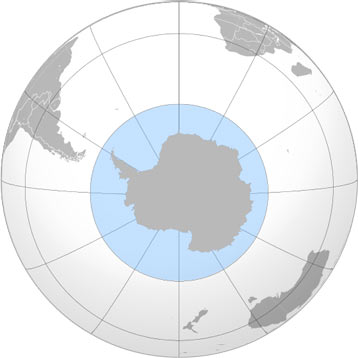The waters around Antarctica are unlike any other waters in the world. They’re cold, deep, and rich with life. And they’re cut off from the other oceans at the surface by a powerful globe-circling current.
 Diagram of the Southern Ocean. Credit: Connormah/Wikipedia
Diagram of the Southern Ocean. Credit: Connormah/WikipediaIn the year 2000, the organization that designates the world’s oceans and seas acknowledged that difference. It named the waters around Antarctica as the fifth ocean − the Southern Ocean.
Officially, it’s all the water from the Antarctic coast up to 60 degrees south latitude − about eight million square miles in all. That roughly corresponds with the Antarctic Circumpolar Current − a river of water that circles Antarctica. It’s the largest current in the world, carrying a hundred times more water than all the world’s rivers combined.
It encircles some deep ocean waters − three to four miles on average, with a deepest point of about four-and-a-half miles. And those waters are highly productive, supporting everything from microscopic plants and animals to fish, penguins, and whales.
Over the last couple of decades, though, scientists have measured some changes in the Southern Ocean. Its waters are quite cold − from about 50 degrees Fahrenheit to below freezing. But they’re getting warmer. That’s reducing the pack ice around Antarctica. They’re also getting more acidic. And there’s evidence that the population of tiny organisms that form the first link in the food chain is decreasing.
So while the Southern Ocean is isolated from the rest of the world’s waters, it’s suffering some of the same problems.

